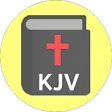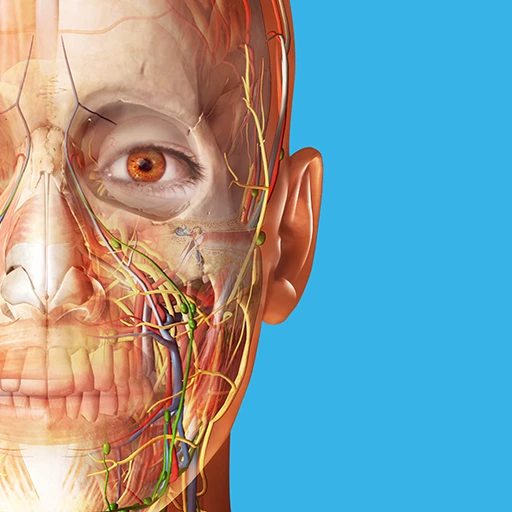 |
|
| Rating: 4.7 | Downloads: 100,000+ |
| Category: Medical | Offer by: Visible Body |
The Human Anatomy Atlas 2025 app is a cutting-edge digital tool for exploring the complexities of the human body, offering detailed visualization of anatomical structures across multiple systems. This comprehensive application combines high-resolution 3D models, extensive reference data, and interactive learning tools to transform how users understand human anatomy, serving medical students, healthcare professionals, and curious learners alike.
Its key value lies in making complex anatomical concepts accessible and engaging through innovative visualization, supporting everything from surgical planning and medical education to personal fitness exploration. The Human Anatomy Atlas 2025 stands out by blending cutting-edge technology with comprehensive content, enabling users to interact with life-like anatomical models and deepen their understanding of biological systems in ways previously limited to textbooks or cadavers.
App Features
- Interactive 3D Human Body Viewer: Explore the human body through highly detailed, anatomically accurate 3D models that can be dissected layer by layer. This feature allows medical professionals to visualize complex surgical scenarios, such as intricate cranial reconstructions, and educators to demonstrate anatomical relationships in dynamic ways, enhancing learning and surgical planning with realistic visualization.
- Detailed Organ System Breakdowns: Access exhaustive reference information covering each organ system, including physiology, pathology, and clinical relevance. The app integrates technical terminology with clear explanations for students studying for board exams, providing detailed insights into complex medical concepts and improving diagnostic understanding through structured knowledge bases.
- Dynamic Learning Modules: Engage with interactive tutorials and quizzes tailored to different learning styles, covering everything from basic histology to advanced neuroanatomy. These customizable modules help learners build foundational knowledge progressively, offering problem-based scenarios that allow medical residents to practice differential diagnoses in a safe, simulated environment.
- Multi-Perspective Visualization Tools: Manipulate anatomical models through various viewing modes, including surface rendering, cross-sectional imaging, and virtual endoscopy. For example, surgeons planning minimally invasive procedures can examine abdominal structures from angles impossible in traditional imaging, saving time during pre-operative planning while improving precision.
- Cross-Platform Accessibility: Use the application on various devices, from smartphones for quick reference during clinical rounds to high-performance tablets for immersive study sessions. This flexibility ensures healthcare teams can access vital anatomical information seamlessly during patient consultations and allows anatomy students to continue their studies anytime, anywhere.
- Advanced Search & Comparison Tools: Quickly locate specific anatomical structures and compare normal vs. pathological states, including interactive overlays comparing healthy vs. disease-affected tissues. This feature is invaluable for pathologists examining rare conditions or researchers studying disease progression mechanisms, streamlining the diagnostic and analytical process while highlighting critical differences.
Pros & Cons
Pros:
- Comprehensive & Up-to-Date Content
- High-Quality Visualizations
- User-Friendly Interface
- Extensive Learning Resources
Cons:
- Potentially High System Requirements
- Some Learning Curve for Complex Features
- Premium Content Access May Require Subscription
- Limited Offline Functionality for Advanced Features
Similar Apps
| App Name | Highlights |
|---|---|
| Anatomage Atlas |
Offers advanced digital dissection and virtual cadaver technology. Ideal for schools and professionals needing detailed surface anatomy and surgical applications with collaborative features. |
| Complete Human Anatomy |
Known for its artistic illustrations combined with clinical data. Features guided learning pathways and detailed muscle/fat documentation perfect for artistic students needing anatomical accuracy. |
| Complete Visible Body |
Provides multiple study modes including surface anatomy and deep structures. Includes teacher tools and printable resources beneficial for educators creating customized learning materials. |
Frequently Asked Questions
Q: How does the Human Anatomy Atlas 2025 app update its content to reflect the latest medical findings?
A: We integrate new anatomical research and clinical insights every 6-12 months, using peer-reviewed journals and collaborating directly with medical institutions to ensure our models and data align with current standards.
Q: Can the app help visualize rare anatomical variations that aren’t commonly taught in textbooks?
A: Absolutely – our extensive database includes over 3,000 documented anomalies. Users can manipulate these variations to understand their implications for surgery or diagnosis, with detailed clinical relevance annotations.
Q: Is the 3D modeling accurate enough to use for surgical planning?
A: Yes – our models are built using validated MRI, CT, and micro-CT scans, with surface anatomy tracing verified against cadaveric specimens. Surgeons use these for pre-operative planning in specialties ranging from neurosurgery to orthopedics.
Q: Can students access the app without specialized equipment?
A: Absolutely! The core functionality works well on any modern smartphone or tablet, though more advanced features like detailed 3D manipulation will work best on devices with high-quality displays and processing power.
Q: How much data does the app require for offline use? Is it suitable for travel medicine students working in areas with poor connectivity?
A: The basic app downloads to about 5GB initially, with additional content available via Wi-Fi connections. While the core features work offline, advanced datasets and search functions require updated cloud access. We recommend periodic synchronization when connectivity allows.
Screenshots
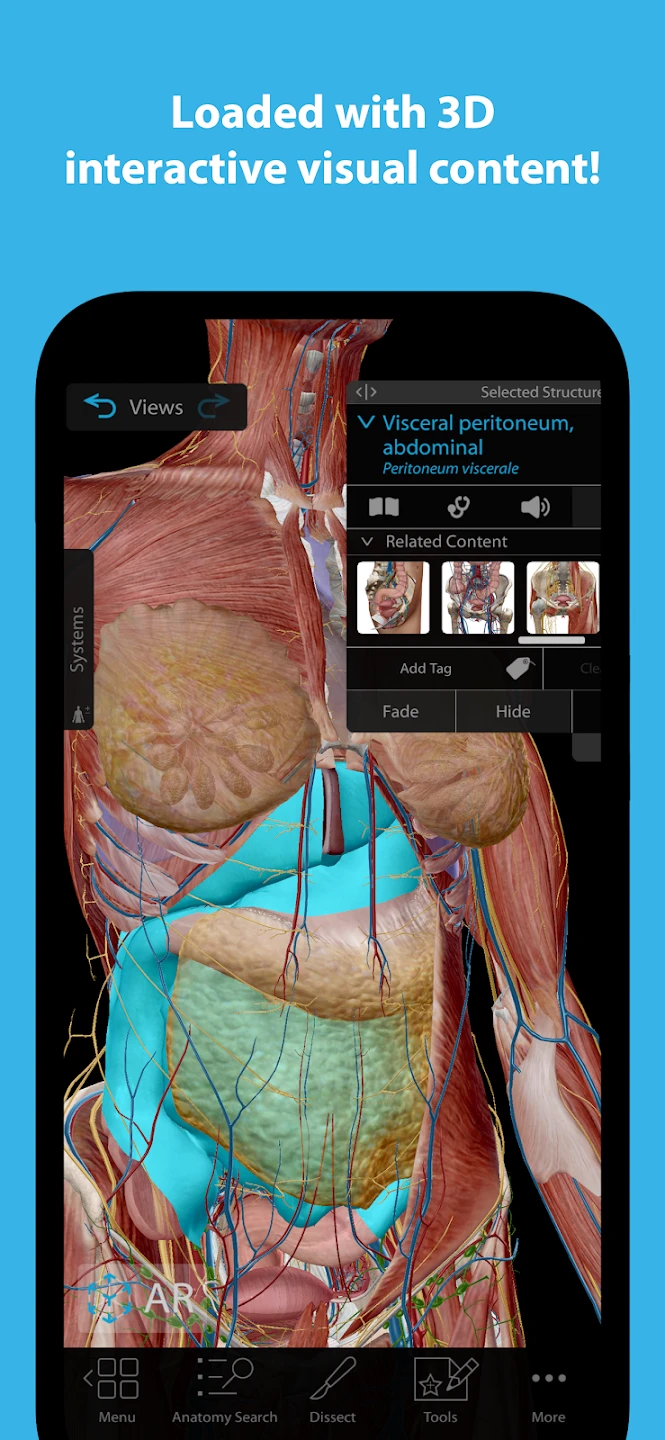 |
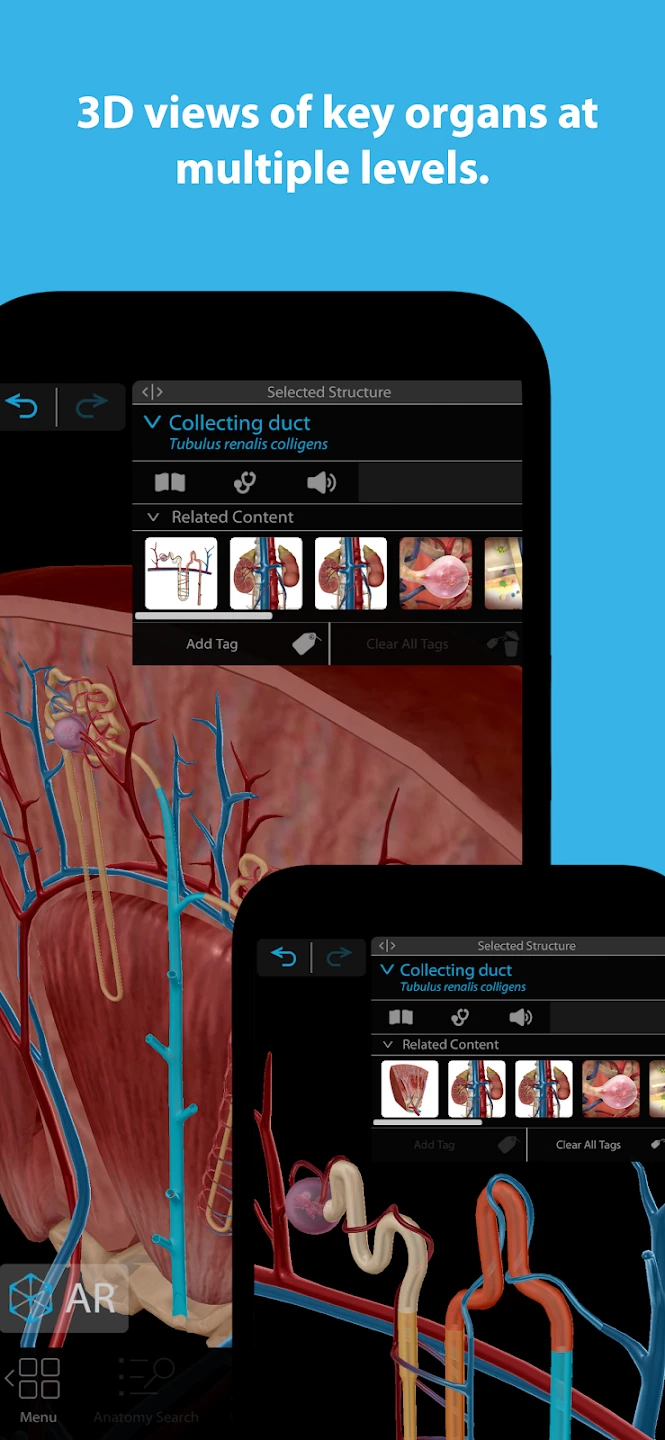 |
 |
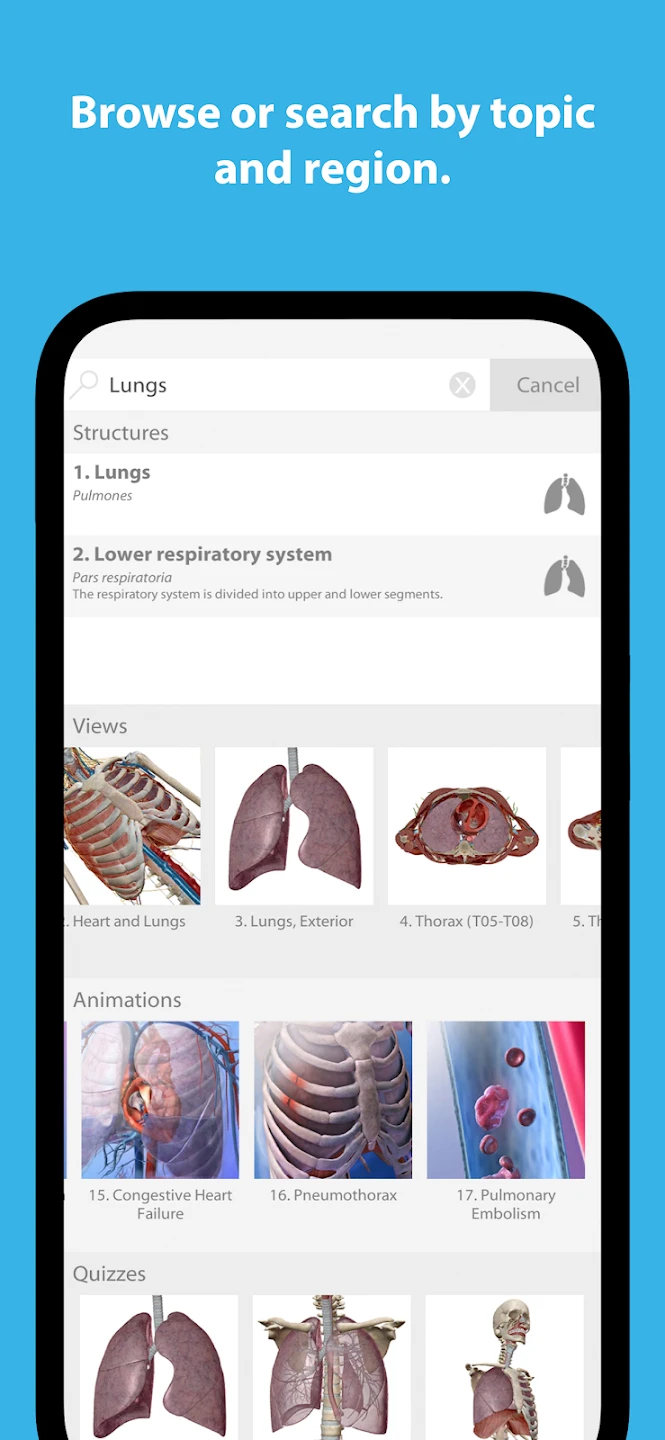 |



